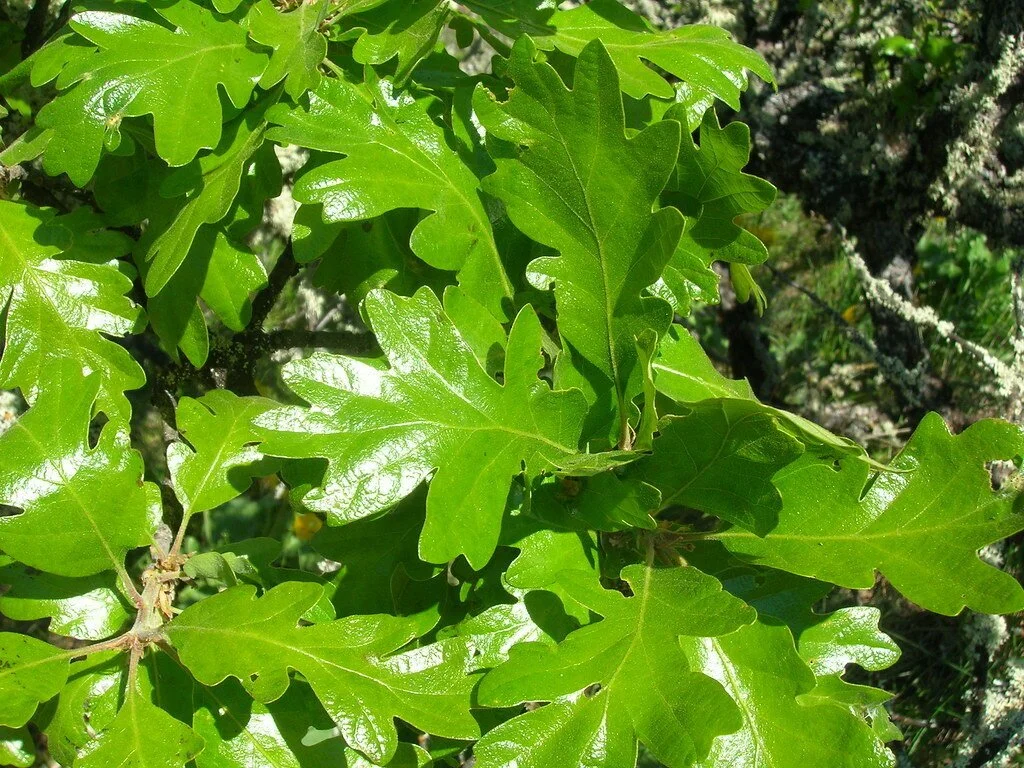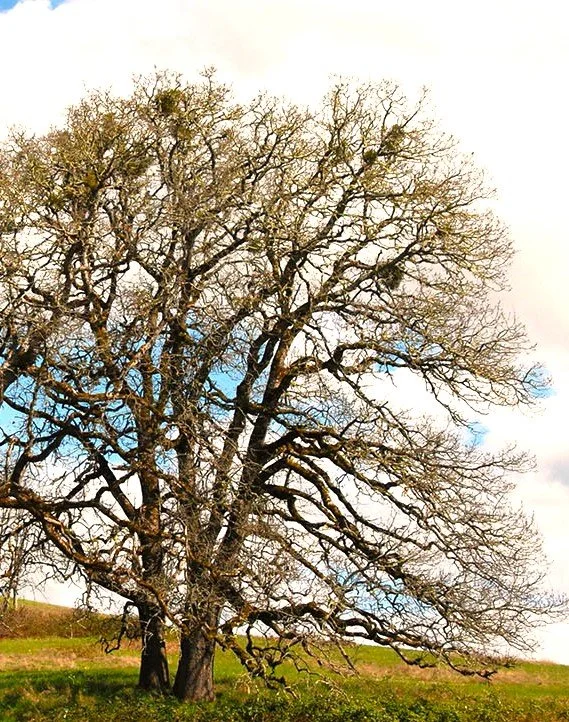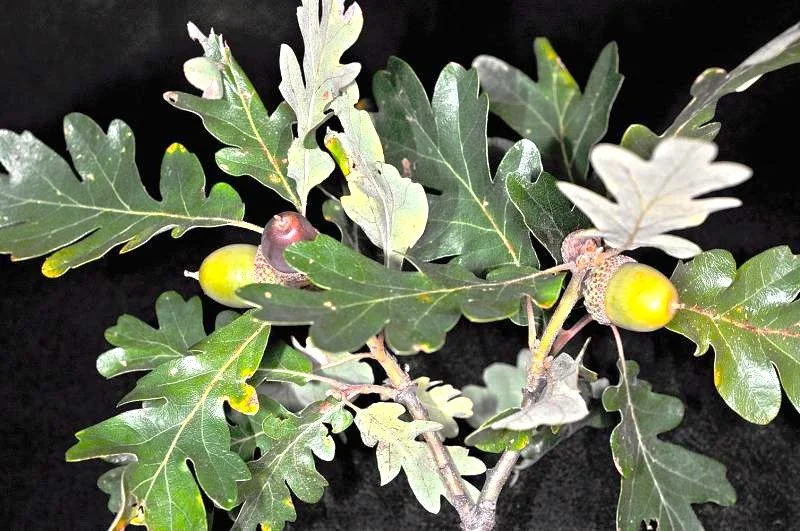Quercus garryana (Oregon White Oak/Garry Oak) (5 gal)
Our only PNW native oak provides food and habitat for many species of wildlife. We grow by acorn from local genetics, and in rare cases rescue them when they are tiny and grow them for years to achieve a top growth of 10-12 inches.
Garry Oak leaves are deeply lobed and turn yellow brown in the fall. Acorns ripen beginning in late August, providing lots of wildlife value. Oaks are a keystone species to support pollinators and beneficial insects, and are critical to our native prairie ecosystem.
Our native Garry Oak is slow growing but can reach to 75 ft. tall and 20 ft. wide over a long period of time. Its growth will be slower / smaller in the dry, rocky soils that are part of its native habitat. Locally, it's associated with prairies or forest edges, growing in full sun but tolerating light shade. They are tolerant of most soil types, from moist to dry and rocky.
With oaks, the roots below ground start off much bigger than the top growth, but once these get in your landscape, they will start expanding and flourishing.
Our only PNW native oak provides food and habitat for many species of wildlife. We grow by acorn from local genetics, and in rare cases rescue them when they are tiny and grow them for years to achieve a top growth of 10-12 inches.
Garry Oak leaves are deeply lobed and turn yellow brown in the fall. Acorns ripen beginning in late August, providing lots of wildlife value. Oaks are a keystone species to support pollinators and beneficial insects, and are critical to our native prairie ecosystem.
Our native Garry Oak is slow growing but can reach to 75 ft. tall and 20 ft. wide over a long period of time. Its growth will be slower / smaller in the dry, rocky soils that are part of its native habitat. Locally, it's associated with prairies or forest edges, growing in full sun but tolerating light shade. They are tolerant of most soil types, from moist to dry and rocky.
With oaks, the roots below ground start off much bigger than the top growth, but once these get in your landscape, they will start expanding and flourishing.
Our only PNW native oak provides food and habitat for many species of wildlife. We grow by acorn from local genetics, and in rare cases rescue them when they are tiny and grow them for years to achieve a top growth of 10-12 inches.
Garry Oak leaves are deeply lobed and turn yellow brown in the fall. Acorns ripen beginning in late August, providing lots of wildlife value. Oaks are a keystone species to support pollinators and beneficial insects, and are critical to our native prairie ecosystem.
Our native Garry Oak is slow growing but can reach to 75 ft. tall and 20 ft. wide over a long period of time. Its growth will be slower / smaller in the dry, rocky soils that are part of its native habitat. Locally, it's associated with prairies or forest edges, growing in full sun but tolerating light shade. They are tolerant of most soil types, from moist to dry and rocky.
With oaks, the roots below ground start off much bigger than the top growth, but once these get in your landscape, they will start expanding and flourishing.



